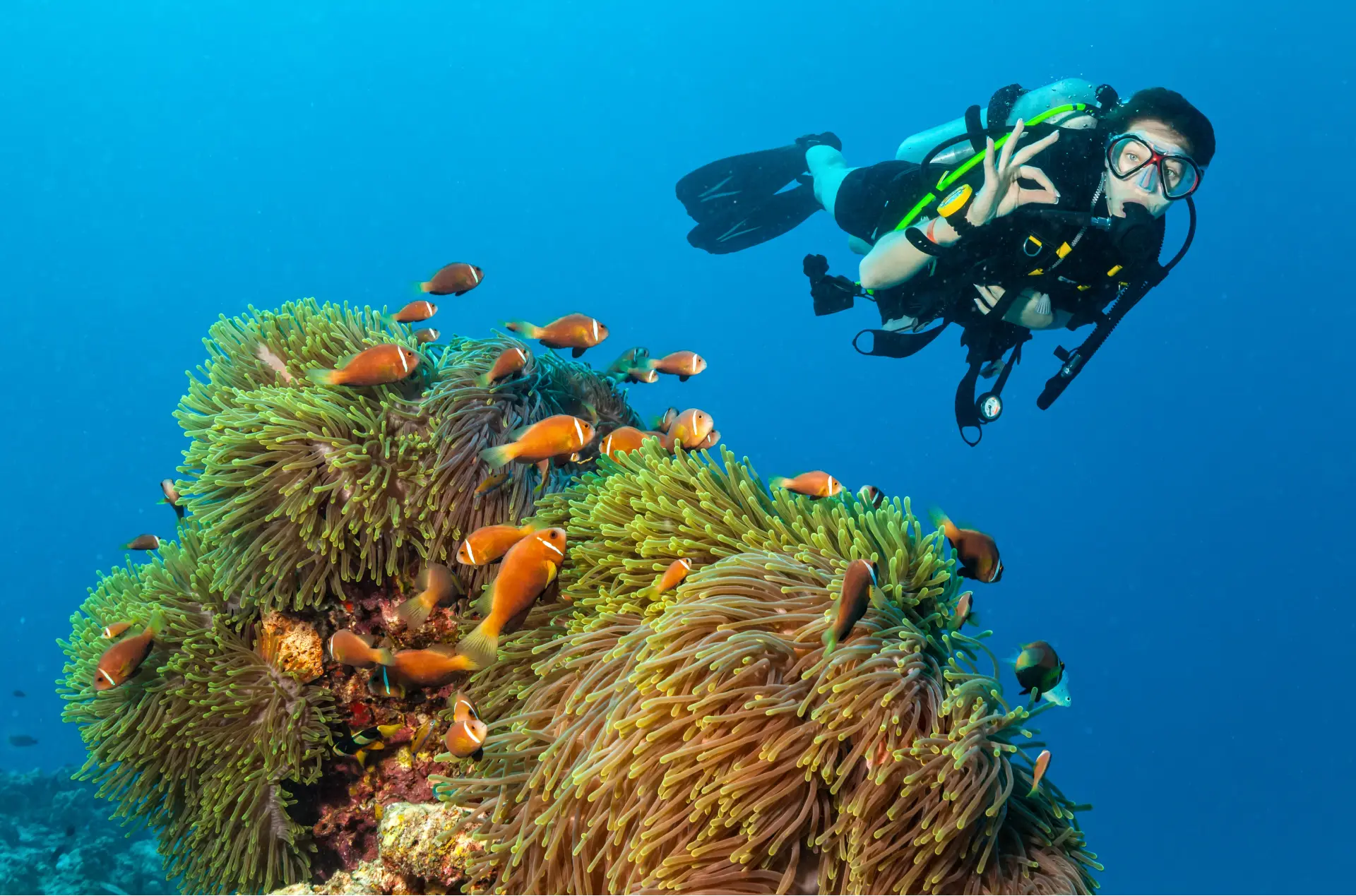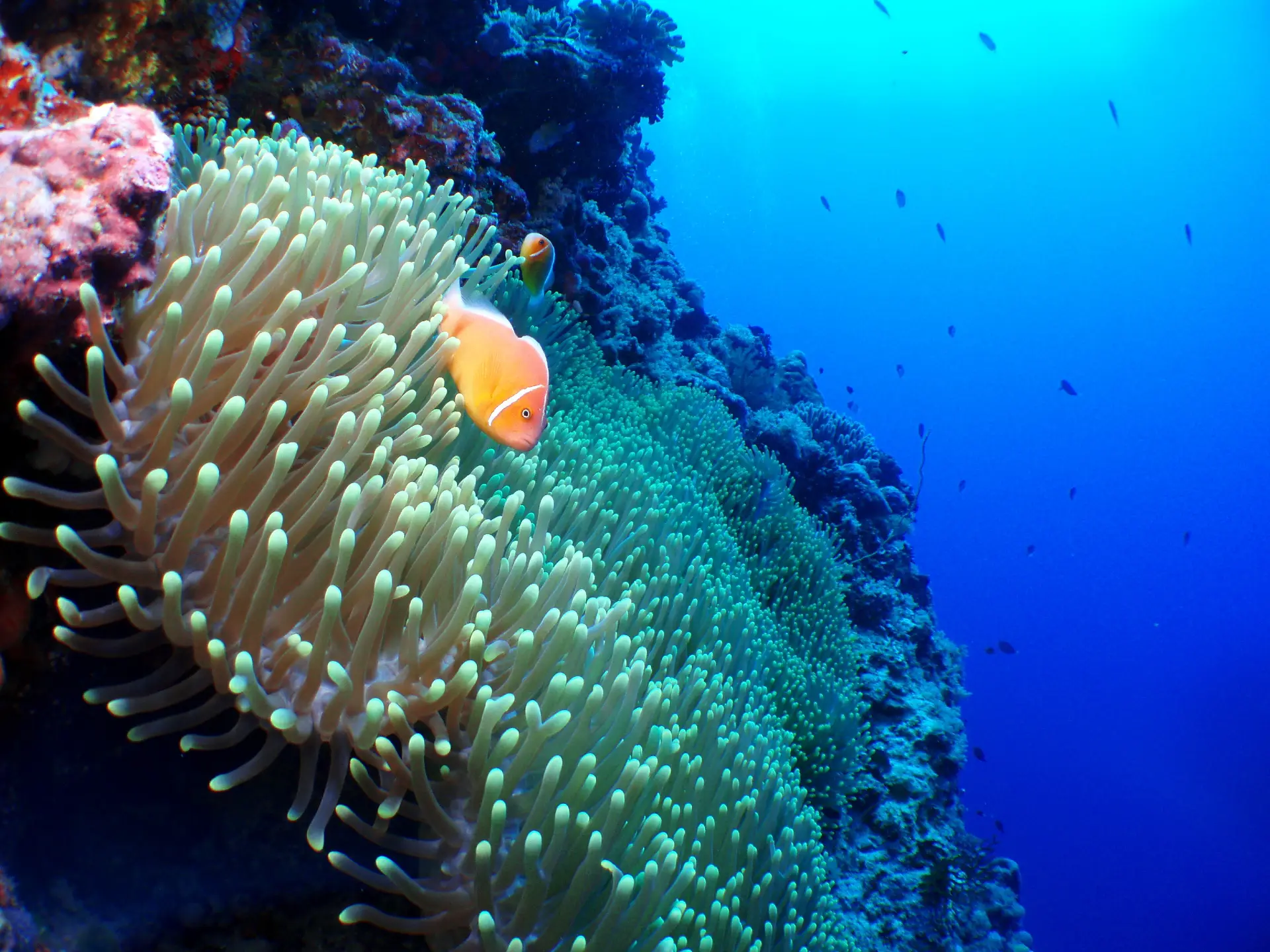The Ocean’s Comedians: A Deep Dive into the Wonderful World of Clownfish
They’re the pint-sized, vibrantly-hued jesters of the coral reef, instantly recognizable and beloved by millions, thanks in no small part to a certain animated blockbuster. But there’s so much more to the clownfish than its cinematic fame. These fascinating creatures lead lives packed with incredible biological curiosities, complex social structures, and a unique partnership that is the envy of the marine world. So, grab your virtual snorkel, and let’s take a plunge into the captivating realm of the clownfish.
 Where to Spot These Underwater Wonders
Where to Spot These Underwater Wonders
To see a clownfish in its natural habitat is to witness a burst of living color against the backdrop of the reef. These fish are residents of the warmer waters of the Indian and Pacific Oceans, as well as the Red Sea. Their ideal homes are sheltered reefs and calm lagoons, where they can find their lifelong partners: sea anemones.
Popular diving and snorkeling destinations to encounter clownfish include:
- The Great Barrier Reef, Australia: This world-renowned ecosystem is teeming with clownfish darting in and out of their anemone homes.
- The Red Sea, Egypt: The crystal-clear waters of the Red Sea offer incredible visibility for spotting various clownfish species.
- The Maldives: The shallow, warm lagoons of the Maldivian atolls are perfect for observing clownfish in their natural element.
- The Philippines: With its vast and diverse coral reef systems, diving the Philippines is another hotspot for clownfish sightings.
- Thailand: The Andaman Sea, in particular, boasts numerous dive sites where these colorful fish are a common and welcome sight.
A Rainbow of Varieties: More Than Just Orange and White
While the classic orange and white-striped Ocellaris clownfish (Amphiprion ocellaris) is the most famous, the clownfish family is surprisingly diverse, with around 30 recognized species. Each boasts its own unique coloration and patterning, adding to the rich tapestry of the coral reef.
Some of the stunning varieties you might encounter include:
- Percula Clownfish (Amphiprion percula): Often confused with the Ocellaris, the Percula typically has thicker black outlines around its white stripes.
- Tomato Clownfish (Amphiprion frenatus): As its name suggests, this species sports a vibrant reddish-orange hue with a single white vertical stripe behind the eye.
- Clark’s Anemonefish (Amphiprion clarkii): This adaptable species comes in a range of colors, from yellow to black, and can have two or three white stripes.
- Saddleback Clownfish (Amphiprion ephippium): This species is easily identified by the large, dark “saddle” marking on its back.
- Pink Skunk Clownfish (Amphiprion perideraion): A delicate pinkish-orange fish with a distinctive white stripe running along its back from its nose to its tail.
 A Life of Intrigue: Unpacking Clownfish Behavior
A Life of Intrigue: Unpacking Clownfish Behavior
The true magic of the clownfish lies in its fascinating and often bizarre behaviors. From their unique living arrangements to their complex social lives, these little fish lead lives that are anything but ordinary.
The Anemone Alliance: A Symbiotic Masterpiece
The most iconic aspect of clownfish behavior is their symbiotic relationship with sea anemones. Anemones possess tentacles armed with stinging cells called nematocysts, which are lethal to most other fish. However, clownfish have a secret weapon: a layer of mucus on their skin that protects them from the anemone’s stings.
This remarkable adaptation allows the clownfish to make its home within the anemone’s venomous embrace, a safe haven from predators. But what does the anemone get in return? This is a true partnership. The clownfish acts as a diligent housekeeper, cleaning the anemone of parasites and leftover food. They also help to aerate the water around the anemone by constantly moving their fins. Furthermore, the clownfish’s bright colors can lure in unsuspecting prey for the anemone, and their waste provides essential nutrients. It’s a classic win-win situation and a stunning example of co-evolution.
A Tale of Social Ladders and Gender Fluidity
The social structure of a clownfish colony is a real-life soap opera. They live in a strict hierarchy within their host anemone. At the top of the pecking order is the largest and most dominant fish, and she is the sole female. The second-largest fish is the breeding male, and the rest of the smaller clownfish in the anemone are sexually immature males.
Here’s where it gets truly fascinating. All clownfish are born male. Should the dominant female die, a remarkable transformation occurs. The breeding male will change sex and become the new female of the group. The next largest non-breeding male will then step up to become the new breeding male. This incredible ability, known as sequential hermaphroditism, ensures the continuation of the colony.
Dedicated Dads and Chatterbox Communicators
When it comes to parenting, the male clownfish takes on the primary role. He diligently prepares a nesting site, often on a rock near the base of the anemone, and entices the female to lay her eggs. Once the eggs are fertilized, the male stands guard, fanning them with his fins to provide oxygen and courageously warding off any potential threats.
And if you thought the ocean was a silent world, think again. Clownfish are surprisingly vocal, communicating with a series of pops and clicks. These sounds are used to establish dominance, defend their territory, and perhaps even to woo a potential mate.
A Bright Future for a Beloved Fish?
The vibrant beauty of the clownfish has made it a popular choice for home aquariums. While captive breeding programs are becoming more common, a significant number are still collected from the wild, which can put pressure on local populations. Additionally, the very coral reefs that clownfish and their anemone partners call home are under threat from climate change, pollution, and ocean acidification.
The story of the clownfish is a powerful reminder of the intricate connections that exist within our planet’s ecosystems. By supporting sustainable aquarium practices and advocating for the protection of coral reefs, we can help ensure that these captivating little comedians continue to brighten the ocean for generations to come. So next time you see a clownfish, whether on a screen or on a reef, take a moment to appreciate the wonderfully weird and truly remarkable life of this iconic marine marvel.

